2019-20 Habs In-Depth Playoff Report Cards

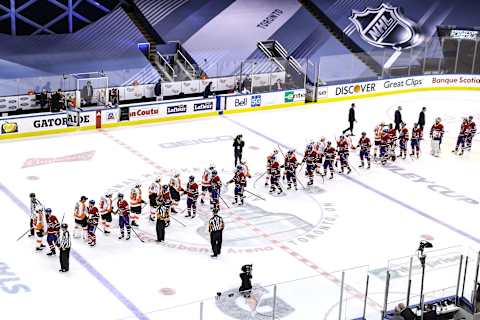
The Montreal Canadiens Canadiens’ postseason came to an end following their series against the Philadelphia Flyers and each performance was worthy of a reflective grade
The ten games of Montreal Canadiens playoff hockey were truly an oasis for myself (and for many other Canadiens fans as well, I would assume) during the wretched year that is 2020. But alas, it came to an, if you were to ask me, untimely end on August 21st. The series should have gone to Game 7 and Montreal was perhaps even the better team, which may make this loss all the more bitter, but certainly makes the future of this franchise shine brighter.
While the postseason consisted of just 10 games for the Habs, those games will certainly impact how this team will move forward. One of Max Domi and Phillip Danault may perhaps be deemed a surplus to requirements following the strong playoff performances of Jesperi Kotkaniemi and Nick Suzuki. The desperate need to bolster the left side of defence has seemingly dissipated, with Brett Kulak taking a big step forward and with Alexander Romanov poised to crack the lineup next season.
All in all, I think the Canadiens got tremendous value from this playoff appearance with the young players gaining key experience, the coaching staff seeing which players thrived when placed together in important games (Drouin-Suzuki-Armia) and with the management, getting added insights on the organization’s players, especially in terms of which players may be expendable.
I also did a report card for each player for their performances in the regular season and against Pittsburgh in the Play-In round. But now, without further ado, let us dive into the in-depth postseason report cards for the Montreal Canadiens, the third and final report card of the 2019-20 season.
Note: When it comes to slightly more advanced player analytics, I generally stick to GF% (percentage of total goals scored when a given player is on the ice belong to said player’s own team), xGF% (same as the previous stat, except that it is based on the expected goals to be scored rather than the actual goals scored), CF% (percentage of total shot attempts when a given player is on the ice belong to the player’s own team) and I sometimes use HDCF% (percentage of high danger scoring chances belong to the players own team).
I do this for three main reasons: I think these four stats cover the most important bases, I don’t see the need in introducing new metrics every other paragraph and, most importantly, to make sure that it is clear that I am not cherry-picking statistics to make any player look particularly good or bad.

A+. <a rel=. . . CAREY PRICE
B. <a rel=. . . VICTOR METE
SHEA WEBER. A -. Just like with Price, the Philadelphia series did nothing to modify the grade I gave Weber following the Pittsburgh series, which is good news, given that it means that the captain continued his strong play. Sure, Weber’s 3 goals and 2 assists look nice on the stat sheet, but his point production really isn’t what made him such a key part of the team throughout the postseason; that honour would go to his defensive play. Weber and Chiarot formed a very imposing and physical pairing for the Canadiens and were key in shutting down the Malkin line against Pittsburgh and the Giroux-Couturier line against Philadelphia. Weber was on the ice for 15 even-strength goals in the 10 games, 9 of which belonged to the Montreal Canadiens. The Canadiens also had the advantage in terms of expected goals when Weber was on the ice, with 54.23%. Weber averaged 25:15 minutes of ice time every game; even more importantly, however, he averaged 4:48 on the penalty kill, which finished at an impressive 84.44% success rate. He played his role to near perfection. Sure, he lost a few footraces, but more often than not, his positional awareness was more than good enough to offset his slowing footspeed. Watching the captain play in these playoffs has certainly made me believe that he can play at a very high level into his late-thirties.. .
A. As good as <a rel=. . . JEFF PETRY
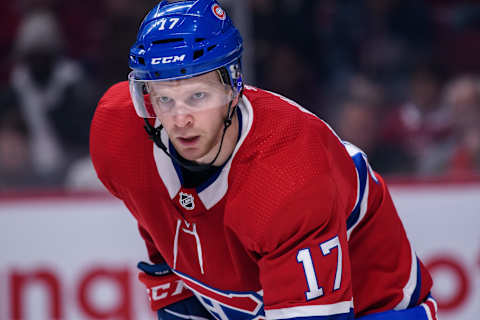
B -. <a rel=. . . XAVIER OUELLET
BEN CHIAROT. B -. <a rel=. .
I know, an A+ is an overkill, I’m aware. It’s no secret that I’m a big fan of Kulak’s, but I do have some rational reasoning for this grade. The Montreal Canadiens had a clear top 3 defensemen all season in Weber, Petry and Chiarot, and the team needed someone to step up to form a solid top-4. Brett Kulak answered the call and delivered, which is all the more impressive, considering Kulak was late to training camp because he was quarantined battling off Covid-19 and it’s symptoms, apparently even struggling to do pushups. Throughout the 10 games, Kulak averaged 18:32 minutes every game, which was significantly lower than the other three since he did not play a role on special teams. He did, however, play 17:38 minutes at even strength on average, 18 seconds more per game than Shea Weber. At even strength, it is Kulak and Petry, who formed the top pairing, entrusted with containing Sidney Crosby and Claude Giroux. Not only did they succeed in this role, the Habs dominated play when Kulak was on the ice at even strength, controlling 57.79% of the shot attempts, 58.48% of the expected goals and scored 55.56% of the goals. Per Natural Stat Trick, among the Habs’ top 4 defensemen in the postseason, Kulak was second in Corsi For percentage, was first in expected goals percentage, leading Petry by 2.48%, and was third in Goals For percentage. This shows that despite his excellent output, he got some unlucky bounces. Of course, this was just an outstanding performance through a mere 10 games. It would be unwise for the Montreal management to assume that Kulak will be able to continue such a high level of play, but I do believe that his performance will result in the lack of a big acquisition of a left defenseman this offseason and with Kulak being slotted in as Petry’s partner on the first pairing in training camp. My final reason for giving Kulak an A+ is the disparity between the expectations placed upon him going into the postseason and the performances he ended up having; he was the player who most surprised me in these playoffs.. . . BRETT KULAK. A+
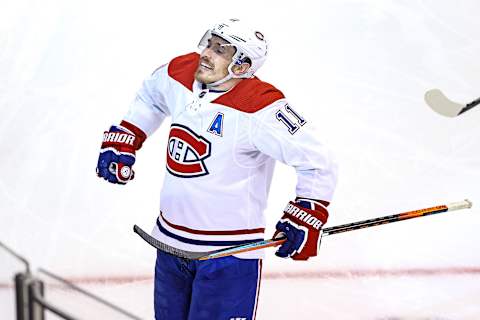
<a rel=. . . DALE WEISE. D -
A. Throughout the postseason, Lehkonen played his role to perfection. While it is becoming clear that he will not develop into a scorer as had once been hoped and he will likely continue to miss golden opportunities with painful regularity, he has become an excellent third line, penalty-killing winger. He played 17:24 minutes on average every game, including 3:39 on the PK; when killing penalties with Lehkonen on the ice, the Montreal Canadiens conceded a goal every 9:14 minutes, not bad. It is at even strength, however, where Lehkonen’s value truly shone, and remember, there were a few games where it was his responsibility, along with Phil Danault and <a rel=. . . ARTTURI LEHKONEN
. JOEL ARMIA. A -. From one excellent Finnish bottom-6 winger to another, Joel Armia certainly is a bigger scoring threat than Lehkonen but controls the flow of play a little less effectively. Up until game 5 of the Philadelphia series, I saw many fans voice their disappointment in Armia’s performance, which was fair to an extent. While I don’t think Armia was playing to the best of his abilities, he was still one of the most dependable Montreal Canadiens forwards, which says more about the rest of the forward corps than it does about Armia. The big Finn took 5 minor penalties in the postseason, most of which resulted from avoidable errant sticks. When Armia wasn’t in the box and was killing penalties instead, he was at the top of his game. With Armia on the ice on the PK, the Canadiens allowed just one goal in 22:43 minutes, and to add to that, Armia even potted a shorthanded goal. At even strength, his possession metrics were quite good as well, with the team controlling 54.55% of the shots, 58.94% of the expected goals and scored 70% of the goals. Once Armia was placed on a scoring line along with Nick Suzuki and <a rel=.
. . BRENDAN GALLAGHER. B -. <a rel=
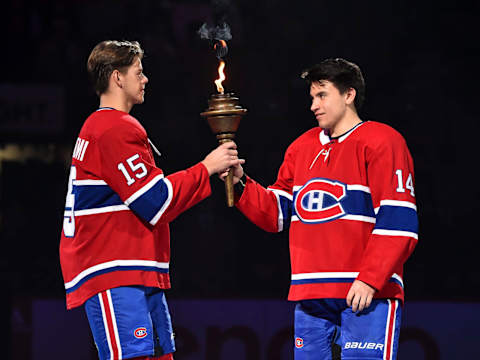
B-. I like <a rel=. . . JAKE EVANS
MAX DOMI. C -. This postseason was truly disappointing for Max Domi. Despite starting out on the fourth line, which, let’s face it, did not allow him to flourish, he was bumped up to the top-6 by Kirk Muller and played 5 games in an offensive role. He also got prime power play time throughout the postseason and failed to capitalize on it. He registered a point in just one of the ten games, a 3 assist performance in Game 2 against Philadelphia. We all know how good Domi can be. When he’s playing with a chip on his shoulder, he’s decisive, gritty and dangerous. He just didn’t play with a chip on his shoulder in this postseason, which resulted in a lot of floating and low-energy play, which is the opposite of what you want to see from Domi. Who knows if Domi plays another game in a Montreal Canadiens sweater, I sure hope he does; he’s a talented player who scored 72 points just one year past; but, truth be told, I do not think he will, with the play of Nick Suzuki and Jesperi Kotkaniemi, <a rel=. .
Phillip Danault did not play well when placed on the top line with Tatar and Gallagher in the postseason. He did, however, thrive when on the “third” line with Lehkonen and Byron. In 10 games, he averaged 19:32 minutes per game, including 4:18 on the PK, which he excelled at; the opposing power play scored just once every 10:45 with him on the PK. Danault was also Montreal’s only reliable faceoff taker, winning 54% of his draws. He scored a single empty-net goal and had two secondary assists, so his production wasn’t really there, but he dominated possession against very strong opposition and defended very well. With Danault on the ice at even strength, the Habs controlled 57.24% of the shot attempts, 60.34% of the high danger chances and 57.42% of the expected goals. Despite this, the Montreal Canadiens conceded six even-strength goals with Danault on the ice while scoring just 5 (well short of the 7.31 expected goals for); this last stat shows that Danault was one of the least lucky Habs in terms of bounces going their way. While his possession numbers would merit an A-grade, his lack of offensive impact really drags his grade down, considering he was the #1 centre going into the postseason.. . . PHILLIP DANAULT. B+
A+. Jesperi Kotkaniemi was the most dominant Montreal Canadiens skater at even strength, full stop, a far cry from his regular-season self, to say the least. The young Finn really broke out in these playoff games, which forced the coaches to give him more and more responsibility, which only led to his play, improving even further. He averaged 13:53 minutes of ice time, but that is significantly pulled down due to the game in which he was thrown out at the start of the second period. Before this postseason, Kotkaniemi had always been a fairly lanky kid who easily lost his balance and didn’t use his powerful shot enough. That all turned around, Kotkaniemi used the break to recover from a ruptured spleen and to gain a whole lot of balance, strength and determination. Speaking of strength, Kotkaniemi actually used it in these playoffs, throwing a total of 36 hits, which was the second-most on the team, Ben Chiarot had 38, and Jeff Petry was third, with 30. Consider though, Chiarot played 92:32 minutes more than Kotkaniemi and still only led him by two; KK was <em><strong>physical</strong> (cue Olivia Newton-John)</em>. Kotkaniemi scored 4 goals in 9 1/3 games but did not register a single assist, which was mainly due to bad bounces and <a rel=. . . JESPERI KOTKANIEMI
A+. Nick Suzuki is the first Montreal Canadiens forward that has had the ability to routinely wow me; mind you, I’ve only been watching games with regularity since 2012, but those eight years still saw a lot of forwards come and go; this kid is something special. Suzuki completes passes that only the very best NHL players can, and yes, I believe Suzuki is on his way to be among the very best; who knows, we may have our very own <a rel=. . . NICK SUZUKI
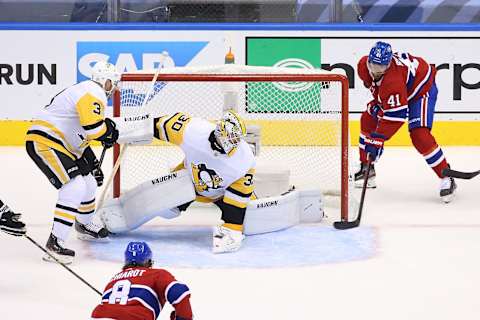
<a rel=. . . JORDAN WEAL. D+
B. There is barely anything for me to grade with <a rel=. . . CHARLES HUDON
C+. The Alex Belzile story is a heartwarming one, undrafted ECHL/AHL journeyman gets signed by the Laval Rocket, earns an NHL contract with his boyhood club in the Montreal Canadiens and makes his first NHL appearance in the postseason and even gets a point shortly after. Story aside, though, Belzile is a good AHLer and not a very good NHL player. He hustles, and hard work is certainly admirable, but he isn’t great defensively, and he isn’t a threat offensively. With Belzile on the ice at even strength, the Montreal Canadiens controlled 60.56% of the shot attempts,100% of the goals (1 was scored), 49.83% of the expected goals and 40% of the high danger chances. This smorgasbord of stats conveys that Belzile and his linemates would shoot a lot from low-danger areas, but struggled to create high-danger chances while also getting lucky for scoring the only goal when deployed on the ice. Hopefully, the Habs can add a good offensive piece in the offseason; the trickle-down effect will be important for this team, adding another good 4th liner could help as well.. . . ALEX BELZILE
A. I like Paul Byron, I really, really do. I could almost copy-paste what I wrote for Lehkonen in here. Byron is a great player to have on your 3rd or 4th line. He’s quick, he controls possession, he creates chances on the rush, he’s a leader, he’s consistent, and he kills penalties. He scored a goal and three assists (two of which were primary) in ten games. The opposing power play scored just once every 11:11 when Byron was on the PK, and Armia’s shorthanded goal came when Byron was on the ice. When Byron was playing at even strength, the Montreal Canadiens controlled 52.89% of the shot attempts, 54.76% of the high danger chances, 61.42% of the expected goals and scored 66.67% of the goals. He even had 20 hits, 19 more than Mete registered. While his contract may not age particularly well, at this point in time, Byron is still an extremely useful piece that just about any team would like to add. He controls possession and uses his speed to create chances; just look at Lehkonen’s series-winning goal against Pittsburgh.. . . PAUL BYRON
I had a brief moment of hesitation before finalizing Tatar’s grade because his possession metrics were pretty good in the postseason, but that was just a very brief moment. While possession metrics are nice and all, I find them more telling for defensemen and bottom 6 players than for the players that are meant to produce. I could care less if the Montreal Canadiens controlled 66.67% of the even-strength high-danger chances when Tatar was on the ice if those chances can’t be capitalized upon. Tatar’s role is to score and to produce, above all else. In the regular season, Tatar led the Habs in points with 61 and held the joint lead in goals with 22, yet, when the Montreal Canadiens needed him most, he vanished. In the10 postseason games, Tatar scored two goals and had no assists, and just like with Max Domi, Tatar’s entire production came in Game 2 of the Philly series, with zeroes on the board for the other 9 games. For the sake of giving you the same metrics for Tatar as for everyone else, here they are 57.39 CF%, 49.07 xGF%, 42.86 GF%. These playoffs, paired with the dissolution of the Tatar-Danault-Gallagher top line, has convinced me that the Habs may be best off trading Tatar away this offseason. His contract is up in a year, and I doubt it would be wise to hand him an extension. He would fetch quite the bounty, despite this poor playoff performance, he was on pace for a 26-goal and 73-point season had he been able to play in 82 games; that’s a valuable piece and more than a few GMs would be willing to take a gamble on the Czech. Considering Kapanen was able to garner the 15th overall pick and a decent prospect in Hallander, Tatar should be able to get something similar. Tatar is a better player than Kapanen, but Kapanen’s younger age and secure contractual situation would minimize that gap. Still, Bergevin may not want to trade Tatar, or any other good roster player, for futures now that the team has shown it can be competitive in a playoff format. It’s certainly something to keep an eye on throughout this offseason, though.. . . TOMAS TATAR. C
. JONATHAN DROUIN. A. I wasn’t expecting to give Drouin an A; I really like him and didn’t want to give him an unfairly high mark as I did for the Pittsburgh series (he was a B at best there, not a B+); and yet here we are. Of course, just like with Suzuki and Armia, the final two games really boosted Drouin’s stats. He recorded 4 assists (2 of which were absolute beauties from behind the net), so before those two games, he had a goal and two assists in 8 games, not great. However, his play had looked pretty good to me throughout the Philly series, despite the many fans that called for his benching. There are two main differences between the plays of Drouin and Tatar in these playoffs: Drouin produced when the Montreal Canadiens were desperate for offensive production while Tatar did not, and when he was not producing, Drouin was at the heart of creating chances against Philadelphia, while Tatar was more of a passenger throughout the playoffs. So Drouin finished the postseason tied for first in points (7) and was first in assists (6). Once he scored that deflection goal against Pittsburgh, Drouin gained a lot of confidence, and a confident Drouin is a pretty darned good player. There is no denying that Drouin is highly skilled; he just struggled to translate that skill to be an effective and dangerous NHL player because he lacked extremely skilled linemates. Once he was paired with Nick Suzuki, a player who is as skilled as Drouin and sees the ice in a similar way, Drouin flourished. That’s the huge difference between <a rel=.
Conclusion
This was a fun little playoff run and it has given me some hope for next season. With the new young centre core and the plethora of prospects coming up (Caufield and Norlinder are looking like studs) the future is bright as well. It will be interesting to see how Bergevin approaches this offseason. Will he offload veterans for picks and prospects? Will he offload picks and prospects for veterans? Or will it be something in between? I’m very curious.
I hope you stay tuned over the next week, as I’ll publish my list of prospects that the Habs will consider at 16th overall, since my article about the 9th overall pick is redundant for us Habs fans now, though I hope Minnesota fans make good use of it instead.
Now I’m going to pour myself a hot cup of tea and watch some hockey to recover a bit from this very long day of writing.
Next. 5 goaltenders to purse in free agency. dark
With that being said, I sincerely hope you enjoyed this in-depth Report Card for each and every Hab to appear in a playoff game!
All statistics are sourced from NaturalStatTrick.com.